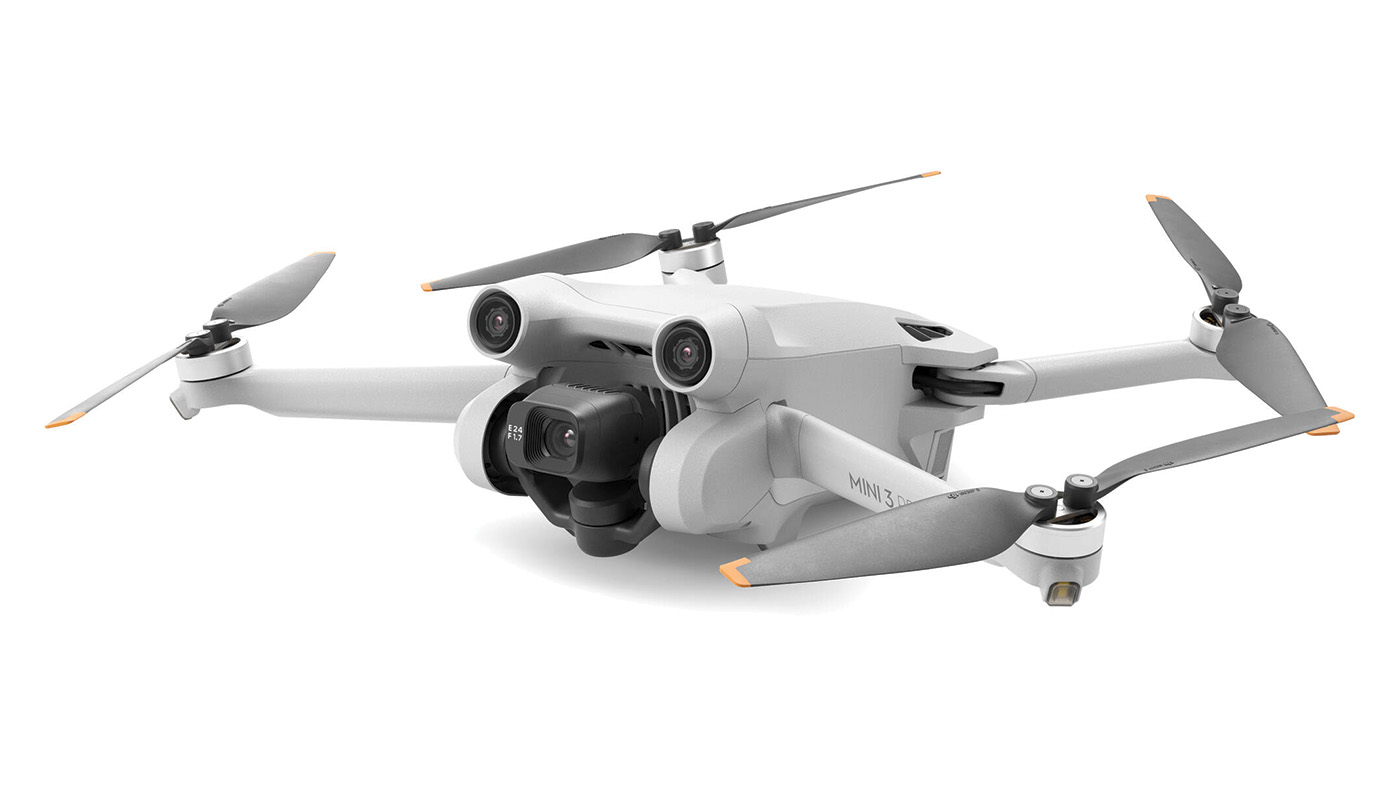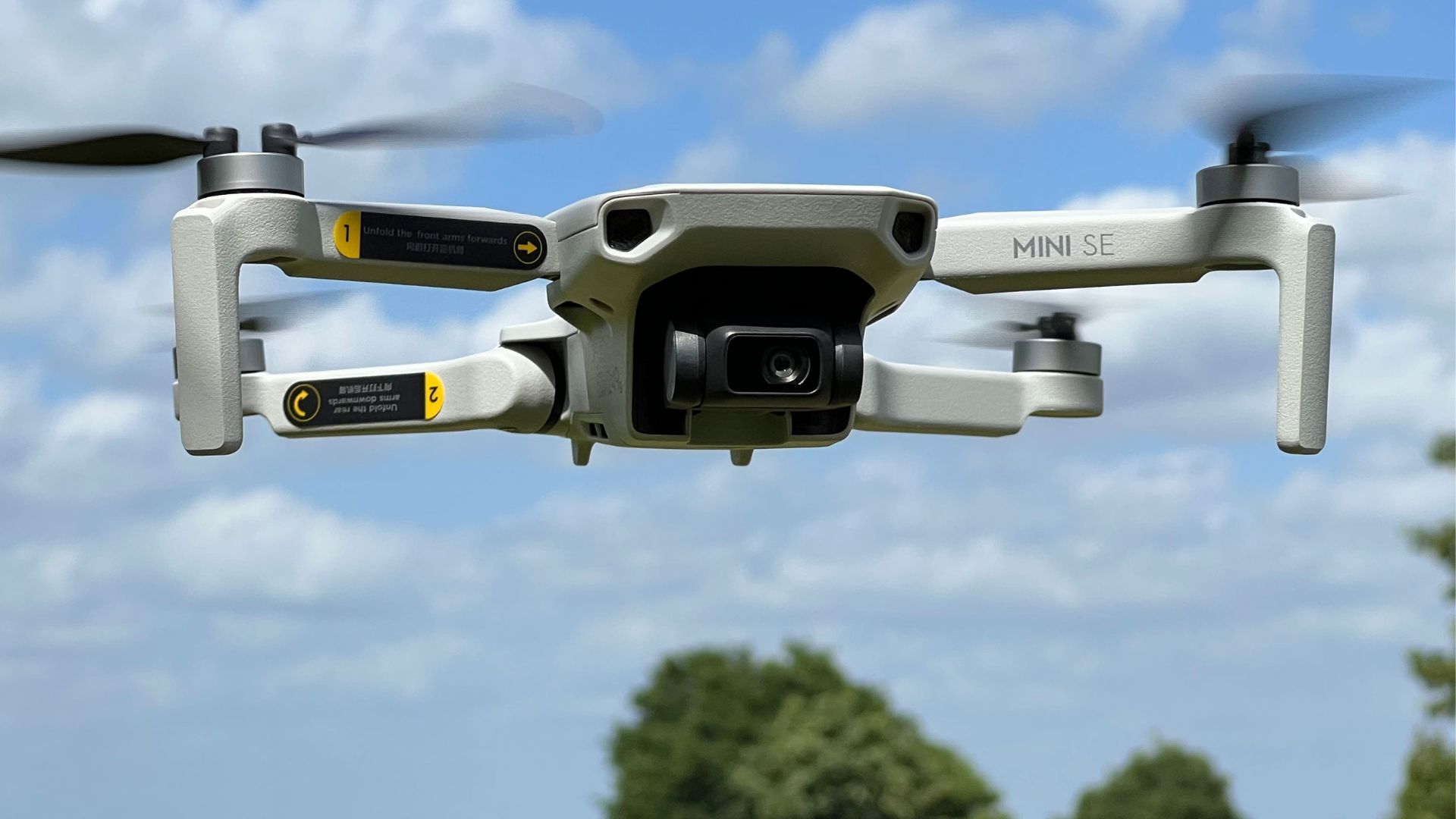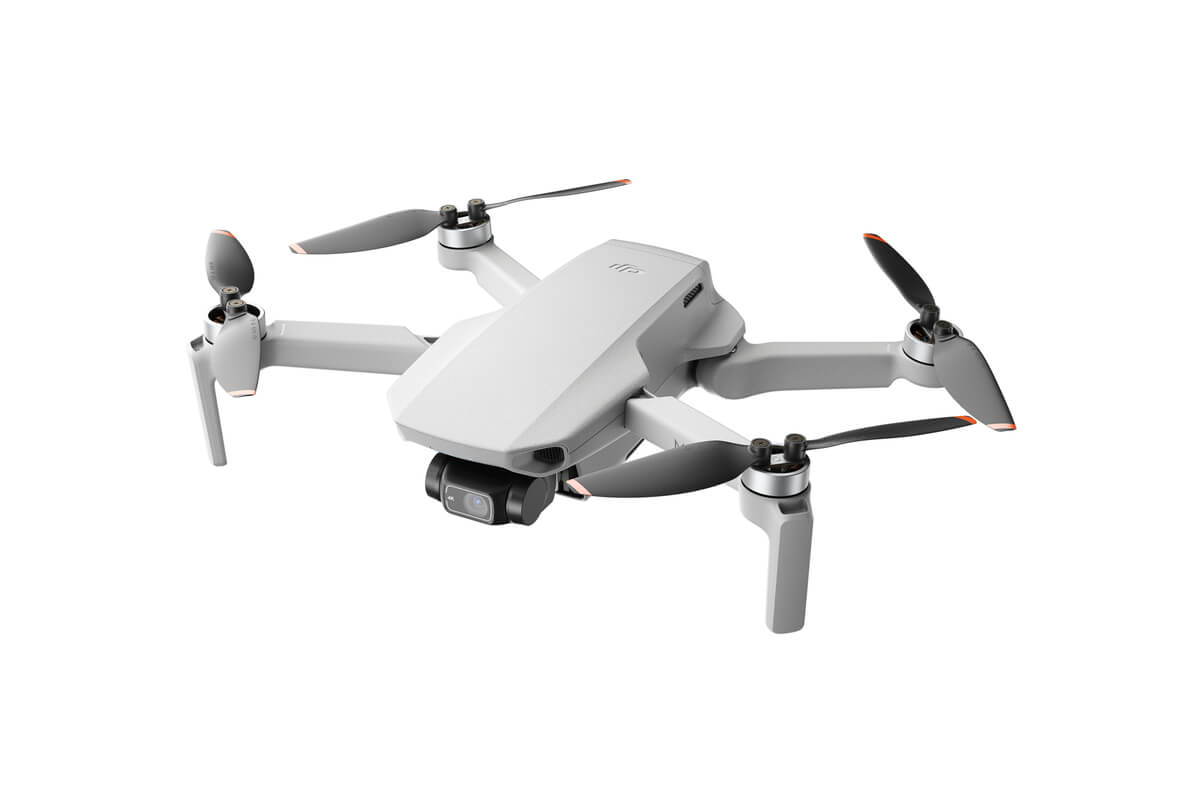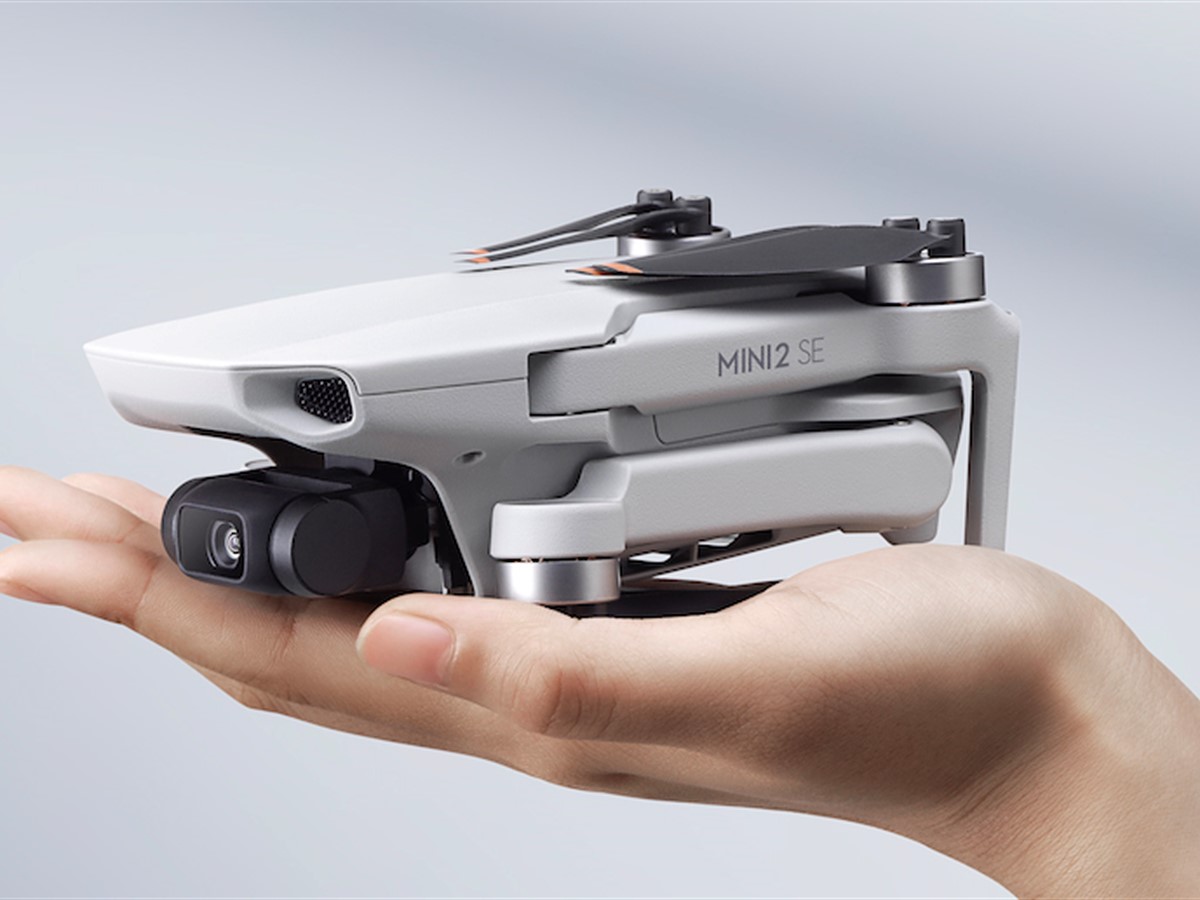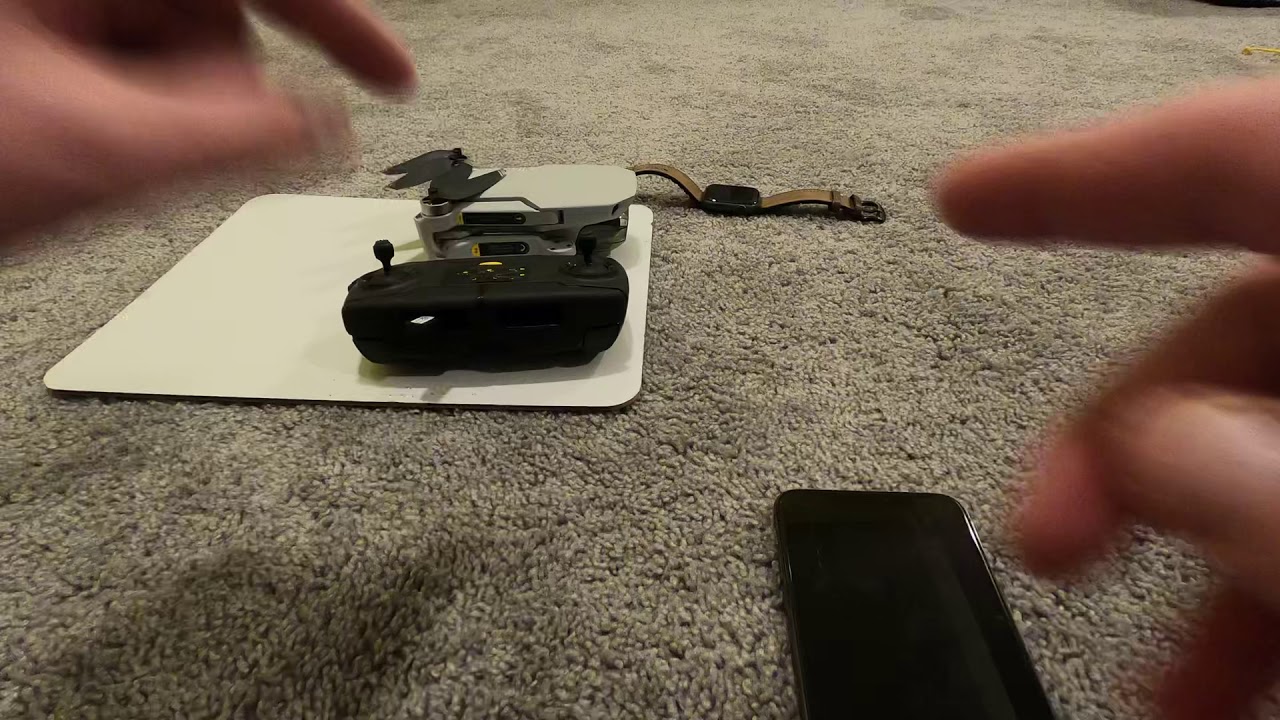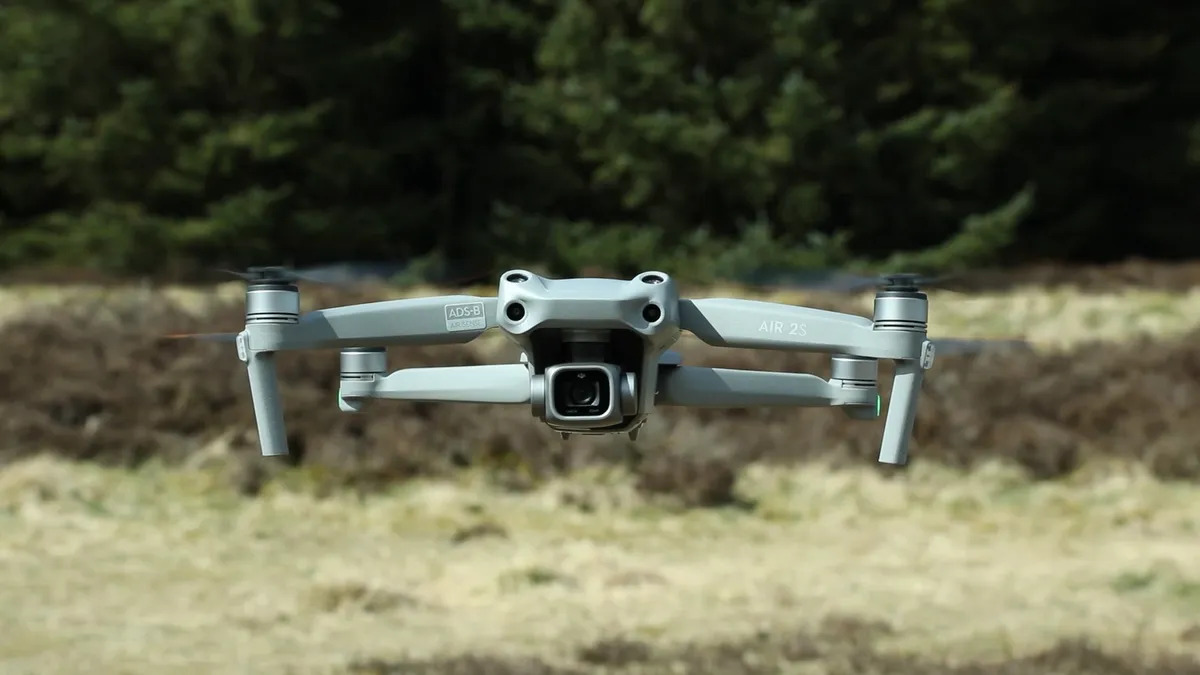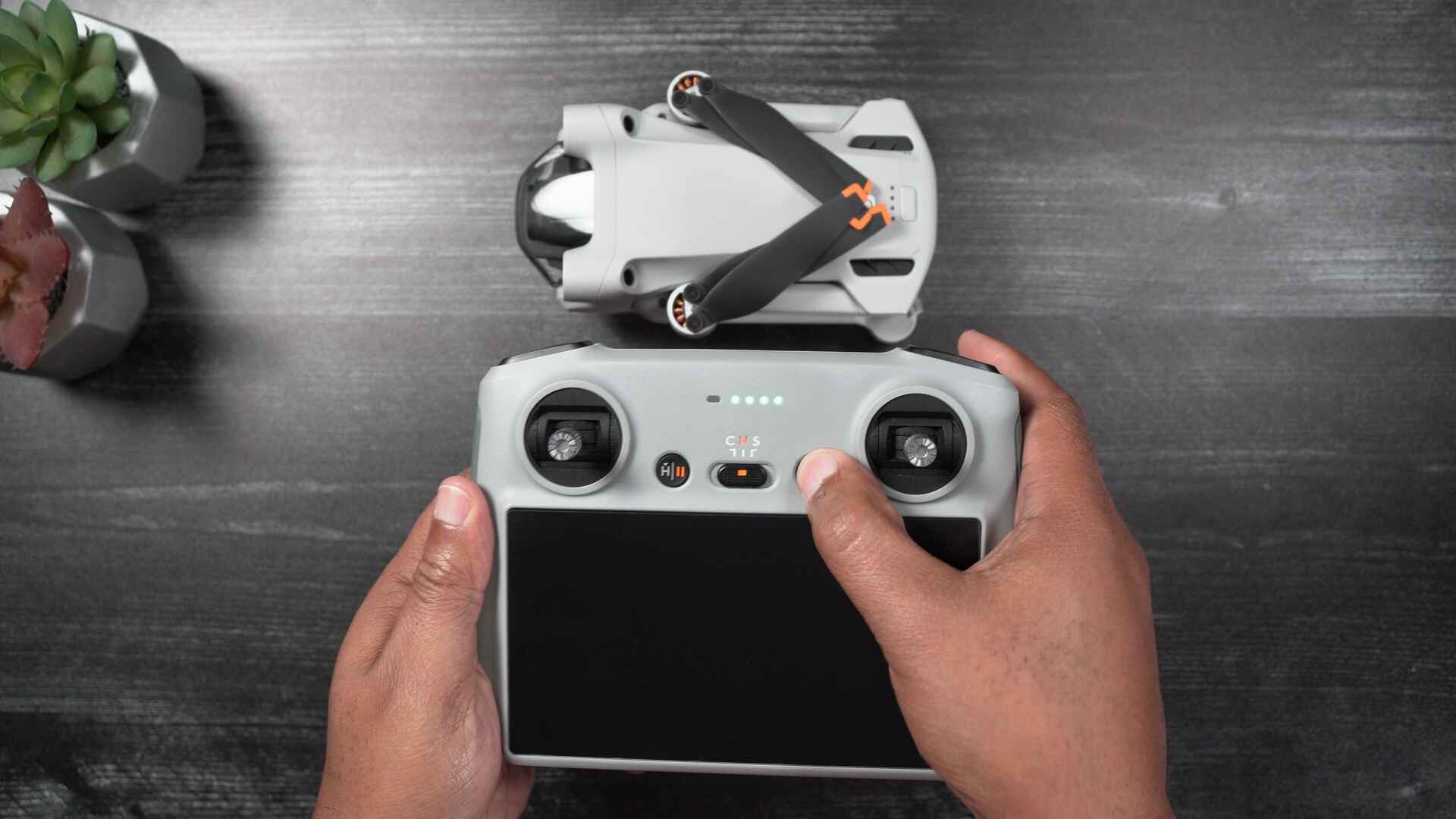Introduction
The DJI Mini 2 is a popular and compact drone that has gained widespread acclaim for its portability, ease of use, and impressive capabilities. One of the key factors that users consider when purchasing a drone is its flight range. The flight range of the DJI Mini 2 refers to the maximum distance it can fly away from the remote controller before losing connectivity and control.
The flight range of the DJI Mini 2 is influenced by various factors, including the GPS range, CE and FCC range limitations, environmental conditions, and the presence of obstacles. Understanding these factors can help users make informed decisions about where and how to fly their DJI Mini 2.
When it comes to the flight range of the DJI Mini 2, it’s important to note that the drone is designed for recreational use and falls within specific regulations set by aviation authorities. Therefore, it’s essential to operate the drone responsibly and within the legal limits of your country or region.
With its compact size and lightweight design, the DJI Mini 2 can reach impressive flight ranges compared to its predecessors. However, it’s crucial to understand the factors that can affect its flight range to ensure a safe and enjoyable flying experience.
In this article, we will explore the different factors that influence the flight range of the DJI Mini 2. We will also provide helpful tips to maximize its flight range and discuss the ideal conditions for optimal performance. So, if you’re eager to know how far the DJI Mini 2 can fly and how to make the most of its capabilities, read on!
Factors Affecting the Flight Range of DJI Mini 2
Several factors can affect the flight range of the DJI Mini 2. It’s important to have a clear understanding of these factors to maximize your drone’s capabilities. Let’s take a closer look at each one:
- GPS Range: The DJI Mini 2 utilizes GPS technology to stabilize its flight and maintain a connection with the remote controller. The drone’s flight range is limited by the maximum range of its GPS signal. In ideal conditions, the GPS range can reach up to 10 kilometers (6.2 miles), allowing for extended flights.
- CE and FCC Range: The flight range of the DJI Mini 2 can be influenced by the CE (European Conformity) or FCC (Federal Communications Commission) range standards. These standards regulate the wireless transmission power and vary depending on the location. The CE range is typically shorter than the FCC range, which means that users in Europe may experience a slightly reduced flight range compared to users in the United States.
- Environmental Conditions: Environmental factors such as wind, temperature, and humidity can impact the flight range of the DJI Mini 2. Strong winds can create resistance and decrease the drone’s flight range, while extreme temperatures or high humidity levels can affect the overall performance of the batteries, leading to reduced flight time and range.
- Flight Mode: The DJI Mini 2 offers different flight modes, including Normal, Sport, and Tripod mode. Each mode has a different impact on the drone’s flight range. In Sport mode, the drone can fly at higher speeds but may have a shorter flight range compared to Normal mode, which prioritizes stability and longer flights.
- Battery Life: The capacity of the drone’s battery plays a vital role in determining its flight range. A fully charged battery will provide the drone with more flight time, enabling it to cover a greater distance. It’s important to ensure that the battery is properly maintained and charged for optimal performance.
- Obstacles: The presence of obstacles, such as buildings, trees, or other structures, can affect the flight range of the DJI Mini 2. The drone’s built-in obstacle avoidance sensors help prevent collisions, but it’s still important to maintain a clear line of sight and avoid flying in areas with dense obstacles that may interfere with the drone’s signal.
By taking these factors into consideration and understanding their impact on the flight range of the DJI Mini 2, you can make informed decisions about where and how to fly your drone. In the next sections, we will discuss the flight range of the DJI Mini 2 in different scenarios and provide tips to maximize its range.
GPS Range
The GPS range is a crucial factor that affects the flight range of the DJI Mini 2. This advanced technology allows the drone to accurately determine its position, maintain stability during flight, and establish a strong connection with the remote controller. The GPS range of the DJI Mini 2 can reach impressive distances, providing users with extended flight capabilities.
In ideal conditions, the GPS range of the DJI Mini 2 can reach up to 10 kilometers (6.2 miles). This means that the drone can fly up to 10 kilometers away from the remote controller while maintaining a stable connection and control. This extensive range opens up a world of possibilities for aerial photography, exploration, and capturing breathtaking footage.
However, it’s important to note that various factors can impact the actual GPS range experienced during flight. Environmental conditions such as interference from buildings, trees, or other objects can potentially weaken the GPS signal, reducing the effective range. It’s crucial to fly in open areas with minimal obstruction to maximize the GPS range of the DJI Mini 2.
Additionally, it’s worth mentioning that regulatory restrictions and different flight modes can also impact the GPS range. Some countries or regions have specific regulations that limit the flight range of drones, so it’s important to familiarize yourself with the rules and limitations in your area.
When flying the DJI Mini 2, it’s recommended to monitor the GPS signal strength through the DJI Fly app. This will ensure that you have a strong and stable connection with the drone and can safely navigate it within the GPS range.
Overall, the GPS range of the DJI Mini 2 is impressive, allowing for extended flights and the exploration of vast areas. By flying in open areas with minimal interference and adhering to local regulations, you can make the most of the drone’s GPS range and enjoy the full potential of your aerial adventures.
CE and FCC Range
The flight range of the DJI Mini 2 can be affected by the CE (European Conformity) and FCC (Federal Communications Commission) range standards. These standards regulate the wireless transmission power and vary depending on the location. Understanding the CE and FCC range limitations will help you determine the maximum flight range of your DJI Mini 2.
The CE range is typically applicable to European countries and imposes more stringent restrictions on the wireless transmission power compared to the FCC range. This means that users in Europe may experience a slightly reduced flight range compared to users in the United States or other regions where the FCC standards apply.
While the exact range limitations may vary depending on the specific model, users can typically expect a CE range of around 2 kilometers (1.2 miles) for the DJI Mini 2. This range is still considerable and allows for a wide range of creative possibilities.
On the other hand, users in regions where the FCC standards apply can enjoy a greater flight range. The FCC range for the DJI Mini 2 can reach up to 10 kilometers (6.2 miles) under ideal conditions. This extended range provides users with more flexibility and opportunities for exploration and aerial photography.
It’s important to note that the CE and FCC range limitations are set to comply with local regulations and ensure safe and responsible drone operation. These limitations are in place to prevent interference with other wireless systems and maintain airspace integrity.
When flying the DJI Mini 2, it’s essential to select the appropriate region in the drone’s settings to ensure compliance with local regulations. This will ensure that you are operating within the approved wireless transmission power limitations and can enjoy the maximum flight range that your location allows.
By understanding the CE and FCC range standards and adhering to the regulations in your area, you can make the most of the flight range capabilities of the DJI Mini 2 while ensuring safe and responsible drone operation.
Flight Range in Ideal Conditions
The flight range of the DJI Mini 2 in ideal conditions is impressive, providing users with extended distances for exploration and capturing breathtaking aerial shots. In optimal scenarios, where there is minimal interference and favorable weather conditions, the DJI Mini 2 can cover considerable distances.
Under ideal conditions, the DJI Mini 2 has a maximum flight range of up to 10 kilometers (6.2 miles). This means that the drone can fly up to 10 kilometers away from the remote controller while maintaining a stable connection and control. Such a range opens up endless possibilities for photographers, videographers, and drone enthusiasts alike.
When flying in ideal conditions, it’s important to consider factors such as wind speed, temperature, and humidity. Strong winds can affect the stability and flight range of the drone, so it’s advisable to fly on days with calm weather. Extreme temperatures or high humidity levels can also impact the overall performance of the batteries, leading to reduced flight time and range.
Flying in open areas with minimal obstructions is ideal for maximizing the flight range in ideal conditions. These open spaces provide better GPS signal reception and minimize the risk of signal interference from buildings, trees, or other structures.
It’s worth noting that even though the DJI Mini 2 has an impressive flight range, it’s important to fly within visual line of sight (VLOS) and adhere to local laws and regulations. Maintaining VLOS ensures that you can safely monitor the drone’s flight and avoid any potential hazards that may arise.
Overall, in ideal conditions, the DJI Mini 2 offers an extensive flight range of up to 10 kilometers, allowing you to explore vast areas, capture stunning aerial footage, and unleash your creativity. By flying responsibly and considering environmental factors, you can make the most of the drone’s capabilities and create unforgettable aerial experiences.
Flight Range in Urban Areas
When flying the DJI Mini 2 in urban areas, there are certain factors that can impact its flight range compared to ideal conditions. Urban environments are typically characterized by dense buildings, structures, and other obstacles that can potentially interfere with the drone’s signal and limit its flight range.
In urban areas, the flight range of the DJI Mini 2 may be reduced due to signal interference from buildings and other structures. Tall buildings can obstruct the drone’s line of sight with the remote controller, leading to a weaker signal and a shorter flight range. Additionally, the presence of Wi-Fi networks, power lines, and other electromagnetic signals can also affect the drone’s signal strength and range.
While the specific reduction in flight range may vary depending on the location and the extent of signal interference, it’s recommended to expect a shorter range compared to flying in open areas. In urban environments, it’s important to exercise caution and prioritize safety by flying in areas with minimal obstacles and interference.
One way to maximize the flight range in urban areas is to choose a flight mode that balances stability and agility. For example, using the Normal mode can help maintain stability and ensure a safer flight, albeit with a slightly reduced flight range compared to Sport mode.
To further enhance the flight range in urban areas, it’s advisable to plan flights carefully, considering the location of nearby Wi-Fi networks, power lines, and other potential signal interference sources. By avoiding heavily congested areas or adjusting the flight path to minimize signal interference, you can optimize the flight range within the constraints of the urban environment.
Lastly, maintaining visual line of sight (VLOS) is essential when flying the DJI Mini 2 in urban areas. The presence of tall buildings and obstacles can obstruct the drone’s movement and make it difficult to maintain a clear line of sight. This increases the risk of collisions and potential accidents. Therefore, it’s crucial to remain vigilant and fly within your line of sight to ensure safe and responsible drone operation.
Overall, while the flight range of the DJI Mini 2 may be reduced in urban areas due to signal interference from buildings and other obstacles, it is still possible to enjoy flying and capturing stunning aerial shots. By carefully planning flights and considering the urban environment’s characteristics, you can make the most of the drone’s capabilities while ensuring safety and adhering to local regulations.
Flight Range in Open Areas
When flying the DJI Mini 2 in open areas, such as spacious parks, fields, or open landscapes, the flight range can be maximized compared to more congested urban environments. Open areas offer fewer obstacles and signal interference, allowing the drone to achieve its maximum flight range under ideal conditions.
In open areas, the flight range of the DJI Mini 2 can reach up to 10 kilometers (6.2 miles) under ideal conditions. This means that the drone can cover vast distances and explore expansive landscapes, providing ample opportunities for aerial photography, videography, and creative exploration.
One of the key advantages of flying in open areas is the minimal signal interference from buildings and other structures. The absence of tall structures allows for a clear line of sight between the drone and the remote controller, resulting in a strong and stable connection, and maximizing the drone’s flight range.
In addition to reduced signal interference, open areas typically offer larger spaces, enabling the drone to maneuver more freely and cover greater distances. This is especially beneficial for capturing panoramic shots or following subjects in motion, as it allows for extended flight time without the need for frequent repositioning.
When flying the DJI Mini 2 in open areas, it’s important to keep in mind the environmental conditions. Factors such as wind speed, temperature, and humidity can still affect the drone’s flight range and overall performance. It’s recommended to choose days with calm weather conditions to optimize stability and flight range.
While flying in open areas provides more freedom and opportunities, it’s still crucial to fly responsibly and within the confines of local regulations. Maintaining visual line of sight (VLOS) with the drone is essential, even in open areas, to ensure safety and avoid potential risks. Always be aware of your surroundings and be mindful of any piloting restrictions or guidelines.
In summary, open areas provide an ideal setting for maximizing the flight range of the DJI Mini 2. With minimal obstacles and signal interference, the drone can achieve its maximum flight range, allowing users to explore wide expanses and unleash their aerial creativity. By choosing suitable weather conditions and adhering to local regulations, you can fully enjoy the freedom and possibilities offered by open areas for your drone flights.
Flight Range with Obstacles
When flying the DJI Mini 2 in areas with obstacles, such as buildings, trees, or other structures, the flight range can be impacted due to signal interference and obstructed line of sight. It’s important to understand how obstacles can affect the drone’s flight range and take appropriate measures to ensure safe and responsible operation.
Obstacles can significantly reduce the flight range of the DJI Mini 2. Buildings, for example, can block the drone’s signal and weaken the connection between the drone and the remote controller. The signal strength can decrease as the drone moves further away from the operator and encounters more obstructions. As a result, the flight range in areas with dense obstacles may be limited compared to open areas.
Trees and foliage can also obstruct the drone’s flight path and reduce its flight range. Tree branches and leaves may interfere with the drone’s propellers and navigation sensors, leading to unstable flight and potential collisions. It’s essential to fly cautiously in areas with trees, maintaining a safe distance to avoid any potential mishaps.
In addition to natural obstacles, man-made structures such as power lines and telecommunications towers can interfere with the drone’s signal and impact the flight range. These structures emit electromagnetic signals that can potentially disrupt the drone’s connection and reduce its effective range. It’s crucial to be aware of the presence of such structures and adjust the flight path accordingly to avoid any interference.
When flying the DJI Mini 2 in areas with obstacles, it’s recommended to maintain a clear line of sight (VLOS) with the drone at all times. This ensures that you can monitor the drone’s position, navigate it safely around obstacles, and respond to any sudden changes or hazards that may arise.
In summary, when flying the DJI Mini 2 in areas with obstacles, it’s crucial to be mindful of signal interference and obstructed line of sight. Such obstacles can reduce the flight range and pose potential risks. By flying responsibly, maintaining VLOS, and avoiding dense obstacle environments, you can ensure a safe and enjoyable flying experience with your DJI Mini 2.
Tips to Maximize the Flight Range of DJI Mini 2
To make the most of the flight range capabilities of your DJI Mini 2, here are some tips to consider:
- Choose an Open Area: Flying in open areas with minimal obstructions and signal interference will allow the DJI Mini 2 to achieve its maximum flight range. Look for spacious parks, fields, or open landscapes to give your drone the freedom to explore without limitations.
- Optimize Weather Conditions: Favorable weather conditions play a vital role in maximizing the flight range. Choose days with calm winds, moderate temperatures, and low humidity levels to ensure stability and optimal battery performance.
- Monitor Battery Life: The battery life directly affects the flight range of the DJI Mini 2. Ensure that the batteries are fully charged before each flight and consider carrying extra batteries for extended flight sessions. Regularly monitor the battery level during flight to avoid unexpected disconnections or the need for emergency landings.
- Select Suitable Flight Mode: Different flight modes prioritize stability, speed, or precision. Choose the appropriate flight mode based on your needs and the desired flight range. Normal mode prioritizes stability and longer flights, while Sport mode provides higher speeds at the expense of a slightly reduced flight range.
- Fly in Compliance with Local Regulations: Familiarize yourself with the local regulations and flight restrictions in your area. Adhere to the guidelines set by aviation authorities and avoid flying in restricted zones to ensure safe and responsible drone operation.
- Maintain Line of Sight: Visual line of sight (VLOS) is essential for safe drone operation and to maximize the flight range. Maintaining a clear view of the drone allows you to monitor its flight path, anticipate obstacles, and make necessary adjustments to ensure a safe and uninterrupted flight.
- Limit Signal Interference: When flying in areas with potential signal interference, such as urban environments, carefully plan your flight path to avoid obstacles and obstructions. Minimize the impact of interference sources such as buildings, power lines, and Wi-Fi networks to maintain a strong signal connection.
- Familiarize Yourself with the Controller: Take the time to learn and understand the features and functions of the remote controller. This includes understanding the signal strength indicators, telemetry data, and navigating the controller menus. Familiarity with the controller will help you make informed decisions during flight and optimize the flight range.
- Keep the Firmware Updated: DJI regularly releases firmware updates for their drones. Stay up to date with the latest firmware to ensure optimal performance and take advantage of any improvements that may enhance the flight range or overall drone capabilities.
- Practice Safe & Responsible Flying: Always prioritize safety and follow the best practices for drone flight. Respect privacy, avoid flying over crowds or sensitive areas, and be aware of your surroundings. By flying responsibly, you protect yourself, others, and the reputation of drone enthusiasts as a whole.
By following these tips, you can maximize the flight range of your DJI Mini 2 and unlock its full potential for aerial exploration and creativity. Remember to always prioritize safety, adhere to local regulations, and enjoy the amazing experience of flying your drone.
Conclusion
The flight range of the DJI Mini 2 is influenced by various factors, including GPS range, CE and FCC range limitations, environmental conditions, and the presence of obstacles. Understanding these factors is essential to maximize the capabilities of your drone and ensure a safe and enjoyable flying experience.
In ideal conditions, the DJI Mini 2 can achieve an impressive flight range of up to 10 kilometers (6.2 miles). However, it’s important to consider factors such as wind, temperature, and humidity that can affect flight stability and battery performance.
The CE and FCC range limitations determine the maximum flight range based on location. While CE range standards may result in a slightly reduced flight range, users in FCC regions can enjoy the full extent of the DJI Mini 2’s flight range.
Flight range in urban areas may be limited due to signal interference from buildings and other obstructions. It’s crucial to exercise caution and prioritize safety when flying in such environments, taking into account signal interference and maintaining a clear line of sight.
On the other hand, open areas provide an ideal setting for maximizing the flight range of the DJI Mini 2. With minimal obstructions and signal interference, the drone can achieve its maximum flight range, offering more possibilities for aerial exploration and creative photography.
By following tips such as choosing open areas, optimizing weather conditions, monitoring battery life, and flying in compliance with regulations, you can maximize the flight range of your DJI Mini 2.
Remember to always prioritize safety, maintain visual line of sight, and fly responsibly. Understanding the factors that influence flight range and taking appropriate measures will ensure an enjoyable and safe flying experience with your DJI Mini 2.









